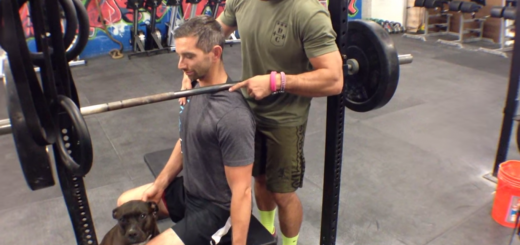Joint Positioning and Power Output
When adhesions/trigger points, reduced mobility, and proprioception are interrupted within our bodies, serious consequences in the ways that we move inevitably follow. This in turn leads to various movement complications. Here are just a few examples:
Immobility
Poor movement patterns due to immobility can lead to acute wear and tear on the cartilage of joints, leading to erosion and arthritic joint changes. Joint dysfunction and inability to go through full range of motion can also have degenerative effects. A 2011 study out of the Department of Orthopaedic Surgery, Tohoku University School of Medicine in Japan showed in an animal study that there can be irreversible joint degeneration from just one week of joint immobilization. Although this type of study cannot be performed on humans due to the serious implications, it does show the drastic complications of joint immobilization and improper movement. This is why CrossFit, mobility, and healthy movement of your joints in general are essential to keeping your joints pain-free and functional.
Length-Tension Relationships
We can also have a disruption of Length-Tension Relationships within muscles. Imagine if you were holding a slinky. If you pull the slinky apart a couple of inches and then let go, it would snap back together. If you pulled it a little farther apart, it would snap back together faster and with more force. If you pulled the slinky so far apart that the spring was completely stretched out and lost its structural integrity, it wouldn’t snap back at all because its structure was compromised. Your muscles act the same way. The Length-Tension Relationship is the relationship between how far a muscle is stretched and how hard and fast it can contract from that point of tension. If it is short and is not stretched at all, there is little force production that can occur. If it is too stretched, it will not be able to contract forcefully. Myofascial release allows us to restore good length-tension relationships within our muscle groups for optimal force contraction.
If Length-Tension Relationships are altered due to immobility, this affects the sequence in which your muscle groups activate — otherwise known as the synergistic relationships within your muscle groups. Kelly Starrett often speaks about load ordering, movement task priorities and how pivotal the set-up of a movement is to injury prevention and force production. Mobility to get into a proper set-up position allows your body to activate the strongest, most efficient muscles to perform a task. When this is impaired, it can lead to improper muscle-activation sequencing, overload of the wrong muscle groups, reduced power output, and potential injury.
Clearly, regular movement is vital to the health of your muscles and joints. However, the quality and volume of movement are key factors to consider when engaging in high-intensity movements. Are you moving efficiently? Are you taking the necessary steps to ensure that pain and possible injuries are mitigated?
In the final part of this series, we will explore in detail the solutions to both prevent and treat poor movement patterns and injuries.
1. Macdonald G, Penney M, Mullaley M, Cuconato A, Drake C, Behm DG, Button DC. An Acute Bout of Self Myofascial Release Increases Range of Motion Without a Subsequent Decrease in Muscle Activation or Force. J Strength Cond Res. 2012 May 10. [Epub ahead of print] PubMed PMID: 22580977.
2. NASM: Essentials of Corrective Exercise Training. 1st. Lippincott Williams & Wilkins, 2010
3. http://www.gilhedley.com/ghvideo.php
4. Myers, Thomas. Anatomy Trains. 2nd. Churchill Livingstone, 2008. 440. Print.
5. Reversibility of immobilization-induced articular cartilage degeneration after remobilization in rat knee joints. Ando A, Suda H, Hagiwara Y, Onoda Y, Chimoto E, Saijo Y, Itoi E. Tohoku J Exp Med. 2011;224(2):77-85.







